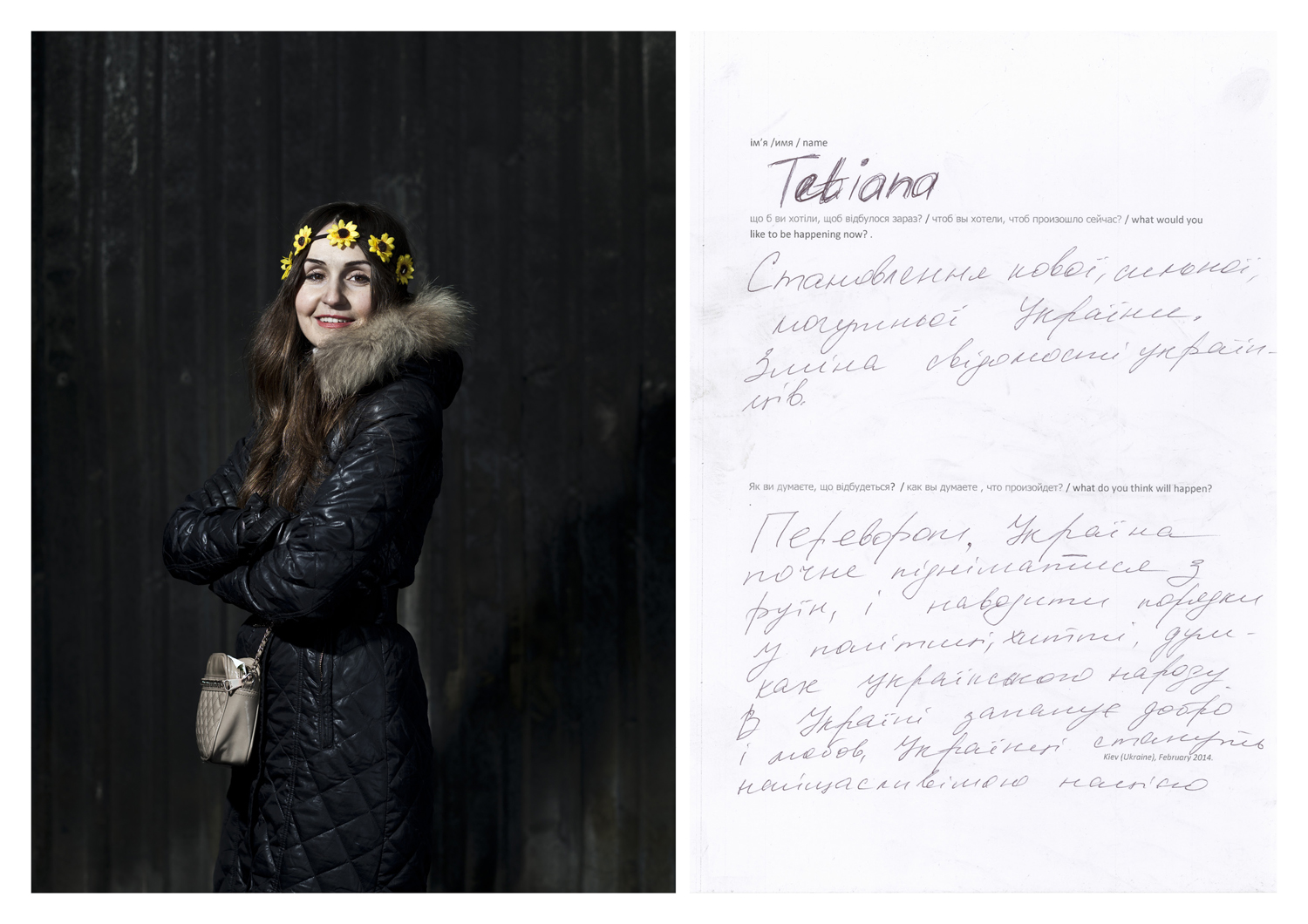EMERIC LHUISSET
Theatre of War, 2011-2012
In the Theatre of War series, I worked with Kurdish guerrilla groups that were at war on the Iraq / Iran border. I asked them to re-enact war situations based on classical paintings. One of the references were paintings from the 1700s and the French-Prussian war. Before this war painting had represented the generals and the king as victors. When France loses everything in this was, what should they then represent? Wheareas earlier paintings represented major landscapes and important battles, a new trend came moving closer in on the subject, focusing on 3-4 soilders. What emerges in these paintings is at the intersection of the absurdity of war and the heroism of the soldier. These paintings bacame the foundation of the construction of the imagery made from war throughout the 20th century.
Hundred portraits of Maydan,
series of 100 portraits of Maydan movement volunteers,
Kiev (Ukraine), February 2014.
Documentary produced by Paradox
From the book Hundred portraits of Maydan










Souvenirs from Syria
Book
The images in this book were originally taken for my own sake, to remember what I saw in Syria, like souvenirs. But a year later I found them on my hard drive and thought that I must show them. When I took them I had no particular intentions and they where not part of an artistic project, so I thought maybe I could give them to the media. But they weren’t interested in year-old pictures. For them, images lose their actuality within a week. So I decided to make a book, a small book in a black box, like those old boxes of photographs that you find in the attic. I wanted to create a more intimate relation for the viewer to these images that where not intended for publication. I used the souvenir as a reference because we cannot talk about memories from a conflict that is still ongoing. A souvenir is something we bring home with us in order not to forget what we saw.
Chebab
A day in the life of a Free Syrian Army fighter
First-person film, 24 hours, looped, shown in real time
Alep and Idlib Province (Syria) August 2012.
We live in a period of transition between the classic war report and the fighter with a mobile phone, which is also a pictorial tale-teller. These pictures distribute themselves via the internet. In this context, this movie attempts to question the representation of conflict. Here, the camera is fixed on a Free Syrian Army fighter in the Aleppo and Idlib area. The video shows 24 hours during which we experience the first-person daily life of the fighter in real time. While in most societies conflict is very present, the hard-to-miss images with which we are presented in games, movies, news, etc. are a fantasy detached from reality. This film attempts to demystify the experience of war.
For Norwegian readers only : Krigens Teater, Nina Toft interviews Emeric Lhuisset in Ny Tid/Modern Times, issue from 04.03.15 http://www.nytid.no/

















